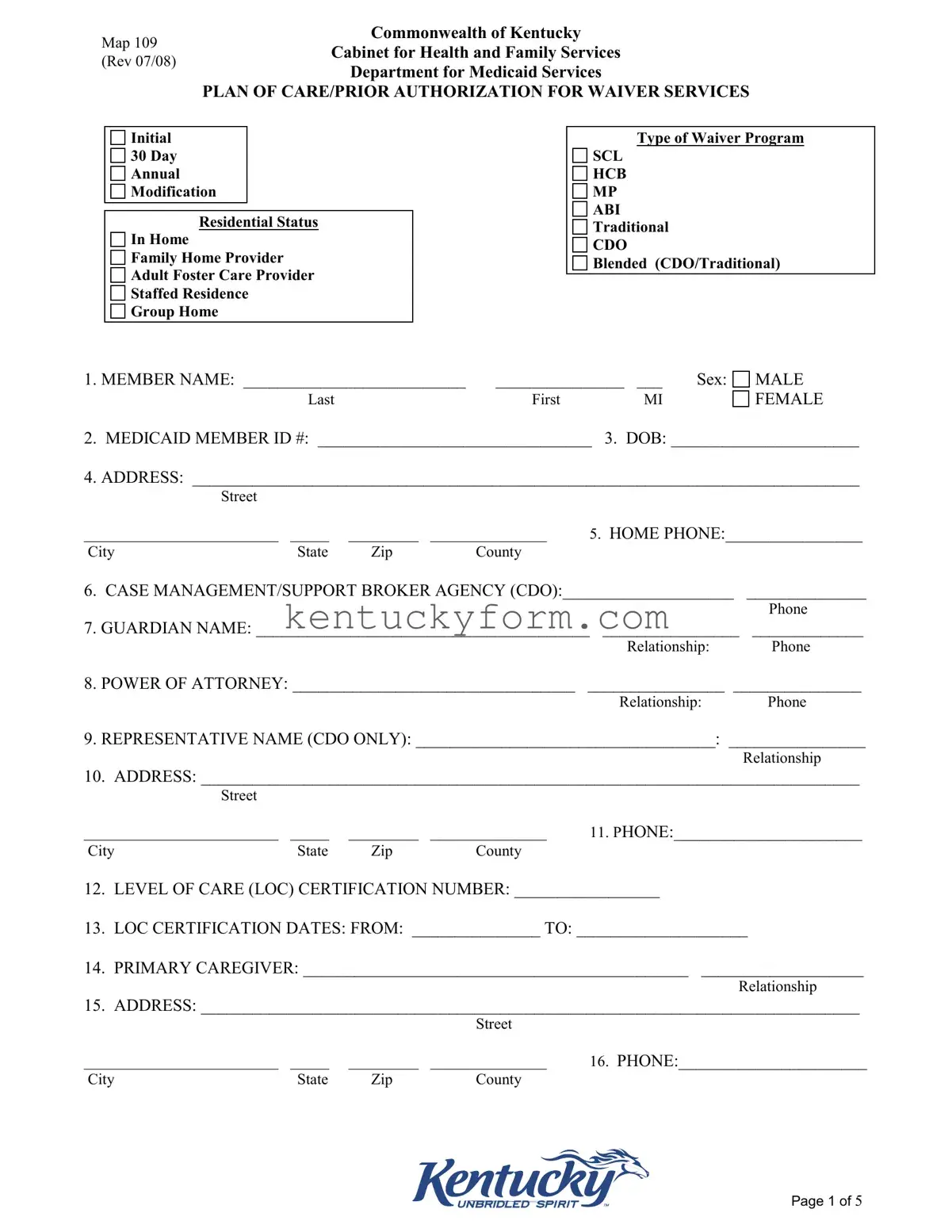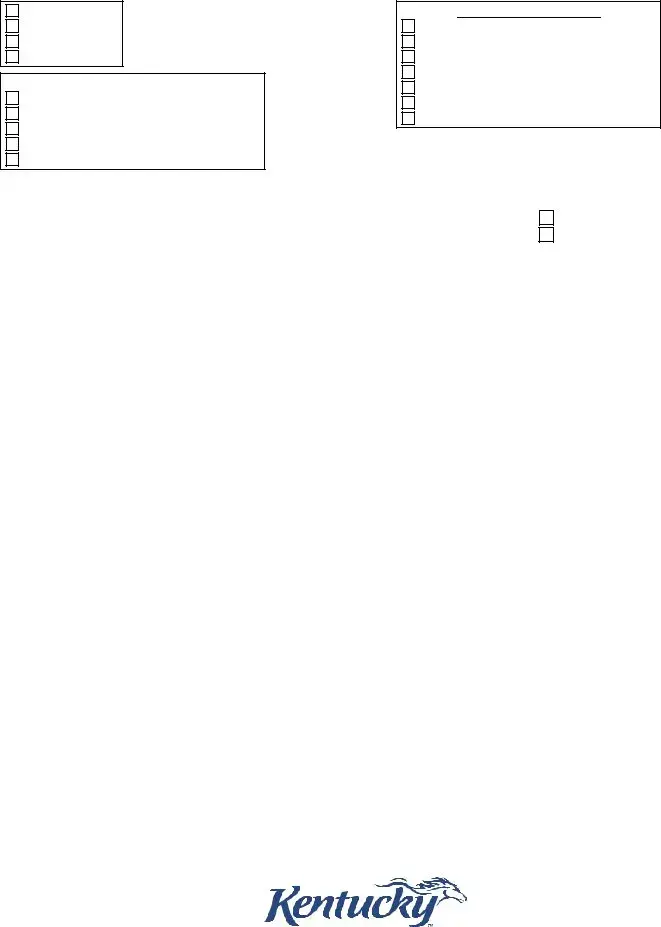The Advance Directive document, similar to the Map 109 Kentucky form, outlines a person's preferences for medical care if they become unable to make decisions for themselves. This form’s structure, focusing on future medical services and care preferences, parallels the Plan of Care/Prior Authorization sections of the Map 109, which detail the services and care coordination for an individual under certain health programs. Both documents serve to guide healthcare providers and ensure the individuals’ healthcare wishes are understood and considered.
A Power of Attorney document, highlighting parallels with the Map 109 form, designates someone to make decisions on another's behalf. This similarity is evident in the Map 109 sections that request Power of Attorney and Guardian information, offering a legal framework for decision-making authority, especially related to healthcare and welfare services under the specified waiver programs. Both documents establish a represented decision-making process, emphasizing the importance of authorized individuals in healthcare planning and coordination.
The Guardianship Agreement, comparable to sections within the Map 109 form, formalizes an individual’s responsibility to care for someone who is unable to care for themselves. The Map 109’s focus on identifying guardians and representatives aligns with the goal of a Guardianship Agreement to ensure safe and proper care, mirroring the intent to protect and manage the welfare of individuals needing assistance with decision-making or healthcare services.
Service Plan documents, like those found within the realm of personal care services, share similarities with the Map 109 form by outlining the specific services an individual requires. These plans often include detailed descriptions of needed services, allocated providers, and anticipated outcomes, closely resembling the Map 109’s comprehensive breakdown of needs, goals, interventions, and provider information, all aimed at tailoring services to meet the individual’s healthcare objectives.
Prior Authorization Request forms required by insurance companies or Medicaid, analogous to the Map 109 form, are necessary for approval before receiving certain healthcare services or medications. The structure and purpose of the Map 109 closely match these documents, as it includes a section for prior authorizations for waiver services, ensuring that the services planned are covered and pre-approved to avoid unnecessary healthcare expenses.
The Individualized Education Program (IEP), though primarily an educational tool, shares a fundamental similarity with the Map 109 Kentucky form in its structured approach to planning and documenting individualized services. Both documents aim to assess needs, set objectives, and monitor the provision and efficiency of personalized programs, whether they are for educational or healthcare services, emphasizing a tailored approach to support the individual's unique requirements.
The Individualized Service Plan (ISP) utilized in various care settings, including developmental disability and elder care, closely mirrors the Map 109 form. Each document focuses on personalized care coordination, detailing service agreements, care providers, and specific outcomes expected, showcasing how personalized plans operate across different sectors to ensure comprehensive support tailored to individual needs.
The Residential Lease Agreement, while primarily a contract for housing, shares some parallels with aspects of the Map 109 form, specifically in sections detailing Residential Status and Provider information. Both documents address arrangements concerning where and with whom individuals will live, though in different contexts, emphasizing the importance of documented agreements in securing stable and appropriate living situations.
The Medical History Form, like the Map 109, collects vital health information for use in planning and providing care. Although serving more general purposes, both documents compile essential data that informs care decisions, from past medical treatments to current health needs, ensuring that healthcare providers have a comprehensive understanding of the individual’s health background for informed care planning.
Finally, the Emergency Contact Form, akin to the emergency backup plan section in the Map 109 Kentucky form, provides crucial information for unexpected situations. Both documents underscore the necessity of having readily accessible contact information and predetermined plans to ensure safety and continuity of care during emergencies, highlighting preparedness as a key component of care planning.









 $
$
